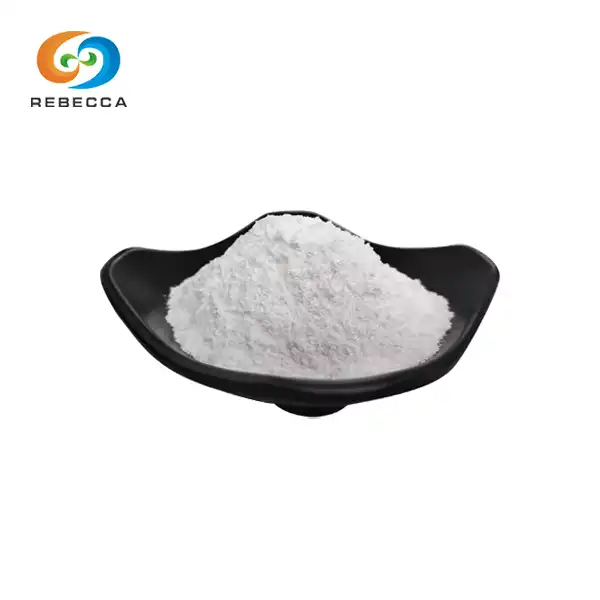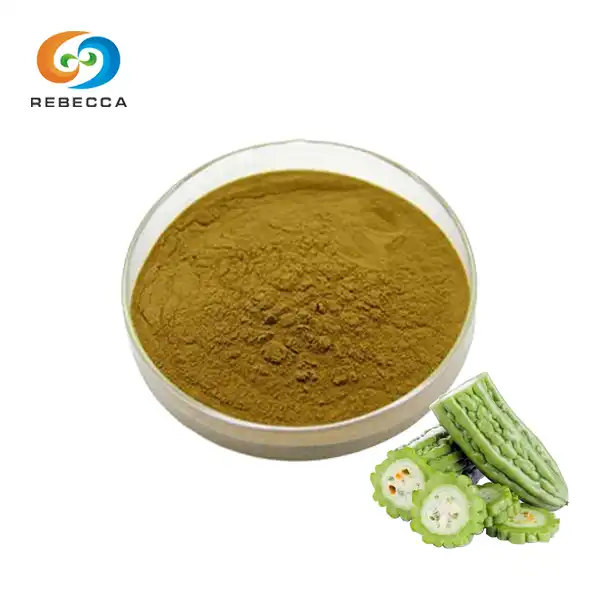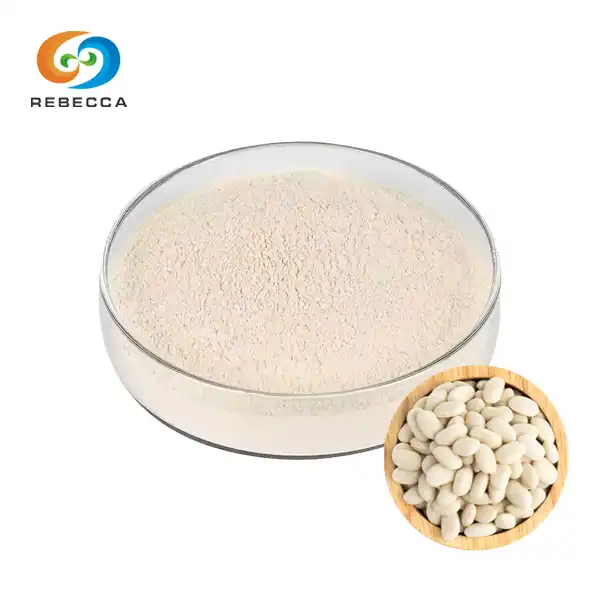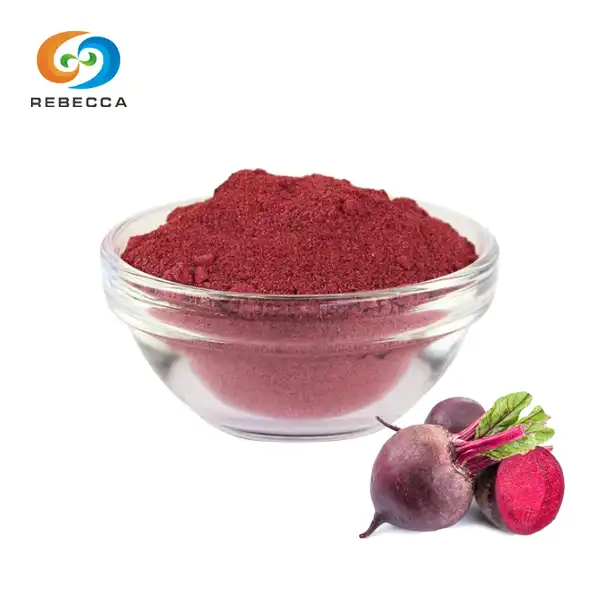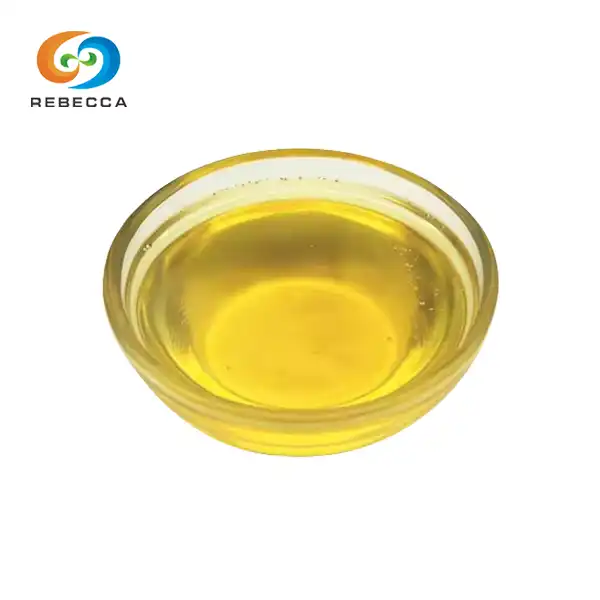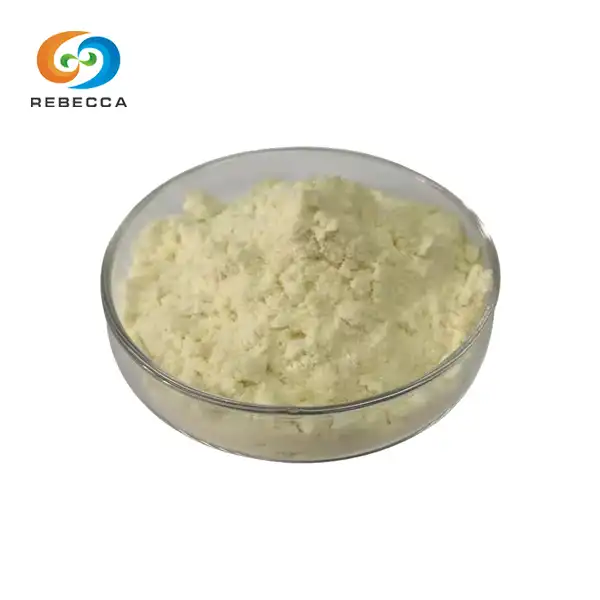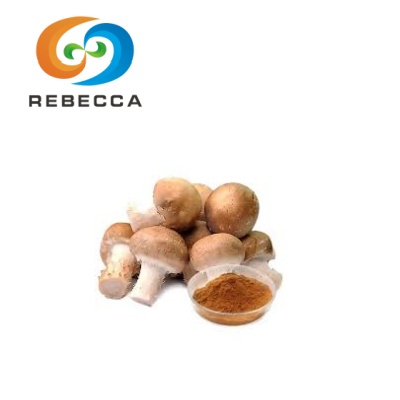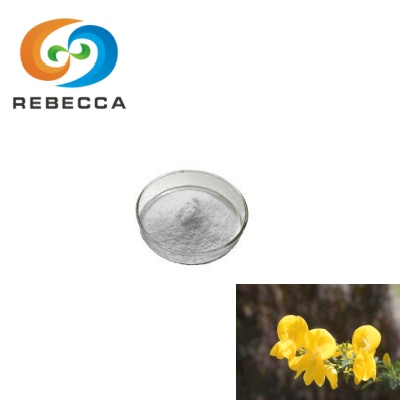What is octacosanol powder?
octacosanol powder is a naturally occurring long-chain alcohol with potential health benefits that has garnered attention in recent years. This white, waxy substance has been studied for its effects on human health, particularly in exercise performance, cholesterol management, and neurological health. It can be found in a variety of plant sources. We will investigate octacosanol's sources, uses, and chemical composition, as well as where to purchase this intriguing compound, in this comprehensive guide.
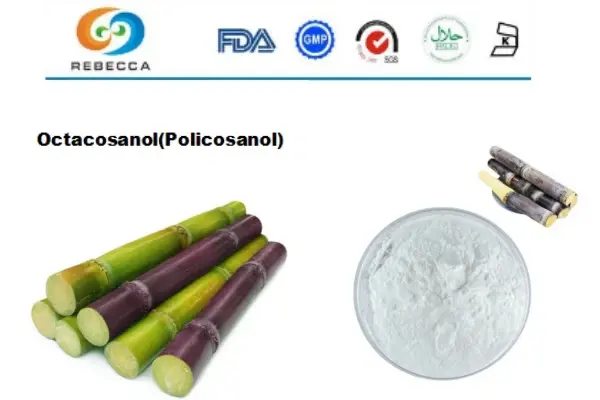
Chemical Composition
Octacosanol is a primary fatty alcohol with a chemical formula of CH3(CH2)26CH2OH that has straight chains. It is a member of the group of substances known as very long-chain fatty alcohols (VLCFAs). One of the longer-chain fatty alcohols found in nature, the molecule has 28 carbon atoms.
Octacosanol has unique properties due to its chemical structure, which contribute to its potential health benefits. Octacosanol is highly lipophilic due to its long hydrocarbon chain, making it simple to interact with and integrate into cell membranes. It is hypothesized that this property contributes to its biological functions.
Octacosanol is frequently a component of policosanol, a mixture of similar long-chain alcohols. Octacosanol and related compounds like triacontanol (30 carbon atoms) and hexacosanol (26 carbon atoms) are typically the primary components of policosanol. Octacosanol typically accounts for between 60 and 70 percent of the mixture in policosanol, though this percentage can vary depending on the source.
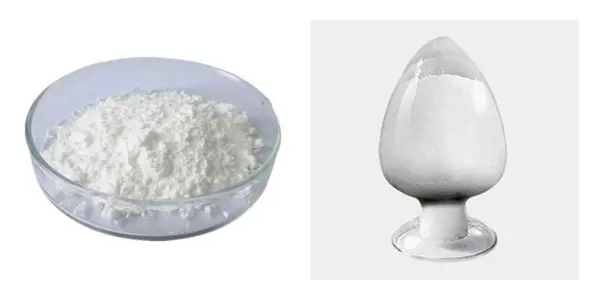
Octacosanol powder has a molecular weight of about 410.76 g/mol. It appears as a crystalline solid or white to off-white powder in its purest form. Octacosanol cannot be extracted from water but must be dissolved in organic solvents like chloroform and ethanol in order to be used in a variety of products.
To appreciate the potential effects that octacosanol may have on human health, it is essential to comprehend its chemical composition. This compound's unique structure enables it to interact with biological systems in ways that scientists are still trying to fully understand. Keep in mind that octacosanol's chemical nature underpins all of its potential benefits and applications as we delve deeper into its sources and applications.
Sources
There are a variety of natural sources of octacosanol, with some plants containing higher concentrations than others. The commercial production of octacosanol and those interested in obtaining it through dietary means both require an understanding of these sources.
Wheat germ oil is one of the most well-known sources of octacosanol. Octacosanol and other beneficial compounds are abundant in wheat germ, the nutrient-dense core of the wheat kernel. Wheat germ oil is a popular nutritional supplement due to its high content of vitamins E and K in addition to octacosanol.
Octacosanol powder can also be found in large quantities in sugar cane wax. The waxy coating that covers sugar cane stalks has a lot of policosanol, and octacosanol is a big part of it. This source has been extensively researched, particularly in Cuba, where policosanol research began in large part.
Octacosanol can also be found in high quantities in rice bran oil. Octacosanol is one of the beneficial compounds in the outer layer of rice grains, which is called rice bran. Because of its potential health benefits, rice bran oil has gained popularity as a cooking oil in some parts of the world.

Octacosanol can also be derived from plants in the following ways:
1. Beeswax: Octacosanol is present in trace amounts in honeybee wax.
2. Spinach: Octacosanol is present in trace amounts in this green, leafy vegetable.
3. Alfalfa: Octacosanol can be found in this plant's sprouts and leaves.
4. Wax from fruits: Octacosanol can be found in trace amounts in the waxy coatings that some fruits, like apples and pears, have on them.
5. Nuts: Octacosanol is present in trace amounts in some nuts, such as almonds and peanuts.
Although octacosanol is present in these natural sources, the concentrations are typically low. As a result, commercial octacosanol products typically come from the richest sources, like wheat germ oil or sugar cane wax, and are then concentrated and purified.
Octacosanol's overall composition and potential effects can be affected by its source. Compared to wheat germ-derived policosanol, sugar cane-derived policosanol may have a slightly different mix of long-chain alcohols. Because of this, some studies specify where the octacosanol or policosanol they used came from.
Wheat germ, rice bran oil, and some nuts can all help people who want to consume more octacosanol in their diet. However, it is essential to keep in mind that the majority of research studies use supplemental octacosanol, whereas diet alone typically yields much higher amounts.
Forms And Uses
Octacosanol has been investigated for a variety of potential applications and is available in various forms. Whether or not octacosanol is right for a person's health goals depends on how well they understand these forms and applications.
Octacosanol comes in the following forms:
1. Powder: There is pure octacosanol powder available, which is frequently utilized in research settings or in the production of other goods. Although it may be less convenient for direct consumption, this form permits precise dosing.
2. Tablets or Capsules: Octacosanol is typically available as a dietary supplement in the form of a capsule or tablet. Octacosanol is the main ingredient in these supplements, which are frequently marketed as policosanol supplements.
3. Oils: Octacosanol is incorporated into oils in some products like wheat germ oil or specialized formulations made for topical or easy consumption.
4. Shakes and bars: Octacosanol powder is added to energy bars or protein shakes in some sports nutrition products for fitness enthusiasts and athletes.

Octacosanol uses:
1. Activity Efficiency: Octacosanol's potential to improve exercise performance is one of the most extensively researched applications. Octacosanol may increase endurance and reduce perceived exertion during physical activity, according to some research. Octacosanol supplementation was found to improve rats' running times in a study that was published in the Journal of Food Science and Technology. This suggests that endurance athletes might benefit from this.
2. Control of Cholesterol: The potential for octacosanol to assist in the management of cholesterol levels has been investigated, particularly as a component of policosanol supplements. Octacosanol may help lower LDL (bad cholesterol) and increase HDL (good cholesterol), according to some studies. However, there has been mixed evidence, and additional research is required to confirm these effects.
3. Health of the brain: Octacosanol's potential neuroprotective properties are receiving increasing attention. Octacosanol might help protect the brain from the effects of not getting enough sleep, according to a study that was published in Experimental Neurology. Its potential for managing conditions like Parkinson's disease has been the subject of additional research, but more research is needed.
4. Skin Wellness: Octacosanol is used in some cosmetics due to its potential skin benefits. It is thought to help the skin's barrier function and moisturize the skin.
5. Efficacy Against Inflammation: Octacosanol may have anti-inflammatory properties, as some studies suggest, which could have an impact on a variety of health conditions. However, additional research is required to fully comprehend this potential benefit.
6. Weight Loss and Metabolism: Although more research is needed in this area, some preliminary research suggests that octacosanol might affect metabolism and help with weight management.

It is essential to keep in mind that, despite the fact that many of these potential uses look promising, the evidence for them is still in its infancy. For octacosanol's efficacy and safety in these applications to be confirmed, additional human clinical trials on a larger scale are required.
It is essential to seek advice from a medical professional before taking octacosanol supplements. They can advise you on whether octacosanol is right for your health and how it might interact with any medications or health conditions you already take.
Where To Buy Octacosanol Powder?
There are a number of choices available to those who are interested in purchasing octacosanol powder for personal use or research and development. Rebecca Bio-Tech, a reputable manufacturer of octacosanol powder and products related to it, is one notable manufacturer in this sector.
Rebecca Bio-Tech has established itself as a market leader in the production of rice bran wax series products as well as policosanol and octacosanol. Their products have taken over 80% of the domestic market share in their region, demonstrating their dedication to quality and extensive market presence. The dependability and quality of their products are demonstrated by their substantial market presence.
The products of the company are exported to a variety of international locations, including Europe, the United States, and Asia, extending their reach beyond domestic markets. Researchers, manufacturers, and consumers all over the world have access to high-quality octacosanol powder thanks to this global distribution network.
You can get in touch with Rebecca Bio-Tech directly at information@sxrebecca.com if you want to learn more about its octacosanol powder or make a purchase. Octacosanol product-related questions can be asked about product specifications, bulk orders, and more thanks to this open line of communication.
References
1. Kato, S., Karino, K., Hasegawa, S., Nagasawa, J., Nagasaki, A., Eguchi, M., ... & Watanabe, T. (1995). Octacosanol affects lipid metabolism in rats fed on a high-fat diet. British Journal of Nutrition, 73(3), 433-441.
2. Ohta, Y., Ohashi, K., Matsura, T., Tokunaga, K., Kitagawa, A., & Yamada, K. (2008). Octacosanol attenuates disrupted hepatic reactive oxygen species metabolism associated with acute liver injury progression in rats intoxicated with carbon tetrachloride. Journal of Clinical Biochemistry and Nutrition, 42(2), 118-125.
3. Gonzalez-Bravo, L., Magraner-Hernandez, J., Acosta-Gonzalez, P. C., & Perez-Souto, N. (2013). Analytical procedure for the determination of 1-octacosanol in plasma by gas chromatography–mass spectrometry. Journal of Chromatography B, 913, 69-73.
4. Taylor, J. C., Rapport, L., & Lockwood, G. B. (2003). Octacosanol in human health. Nutrition, 19(2), 192-195.
5. Arruzazabala, M. L., Carbajal, D., Mas, R., Molina, V., Valdes, S., & Laguna, A. (1994). Cholesterol-lowering effects of policosanol in rabbits. Biological Research, 27(3-4), 205-208.
